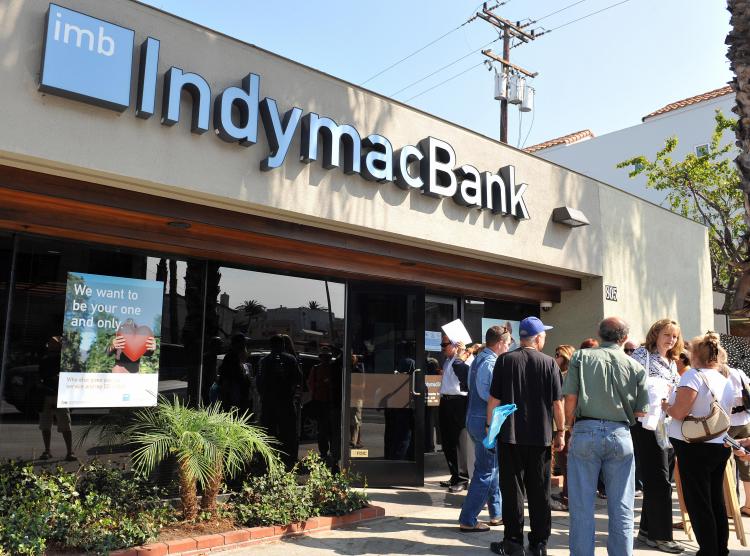NEW YORK—News of IndyMac Bancorp.’s collapse has spawned similar worries that more regional banks may bite the dust.
Attitude towards financial institutions further soured after mortgage specialists Freddie Mac and Fannie Mae suffered blows to their equity and deposit values.
Investor confidence is bound to tumble as depositors and shareholders alike start a massive pullout of their money and assets. The impact could soon spread to other banks, possibly hitting regional banks the hardest.
If regional banks fold, the general consensus of the financial community is that the Federal Deposit Insurance Corporation (FDIC), after covering IndyMac’s disintegration, will not be able to fully subsidize equity losses other banks may face. Experts put the number at around a possible 300 banks that are at risk of failing.
Stocks Stumble
Over the weekend, speculation arose that mortgage giants Fannie Mae and Freddie Mac could collapse on Monday after IndyMac’s demise. But that was not the case Monday, as a Federal Reserve statement promising aid to IndyMac helped Fannie’s and Freddie’s stock rise about 20 percent in premarket trading. But during the day, Fannie Mae’s stock dropped 5.1 percent to $9.73, and Freddie Mac slipped 8.3 percent to $7.11.
In conjunction with the news, Washington Mutual’s stocks plunged 35 percent to $3.23. NCC was down 14.7 percent to $3.77, and M&T dove 15.6 percent to $58.82.
Despite the nose-dives, all three banks were optimistic, confident in their abilities to stay afloat.“[WaMu] significantly exceeds all regulatory ‘well-capitalized’ minimums for depository institutions,” the bank said in a statement on Monday. It further reassured skeptics that “WaMu has current excess liquidity of more than $40 billion and a national franchise with approximately $150 billion in retail deposits.”
NCC echoed the sentiment of WaMu.
“National City is experiencing no unusual depositor or creditor activity,” it stated, adding, “The bank maintained more than $12 billion of excess short-term liquidity… National City maintains one of the highest Tier I regulatory capital ratios among large banks.”
No Fed Help
The Federal Reserve is monitoring the crisis constantly and frequently to respond to the fluid financial system.
The FDIC reported that it has a “problem list” of 90 banking institutions that are at risk of folding. In total, the banks have more than $26 billion of assets.
The FDIC’s deposit insurance fund may currently have $52.8 billion, but that number is sure to decline after IndyMac’s buyout. IndyMac had about $32 billion in assets and $19 billion in deposits.
Because of this, the general assumption of the financial industry is that after IndyMac, and quite possibly Freddie Mac and Fannie Mae, the government may not be able to bail out too many banks.
The implications of this are enormous. As collapsing regional banks are left to fend for themselves, diminishing economic conditions could plunge the nation into a deep recession. Already, experts are saying the economic crisis is the worst in three decades, and yet the situation seems like it could take a turn for the worse.







Friends Read Free